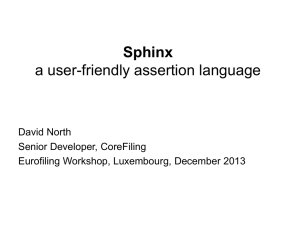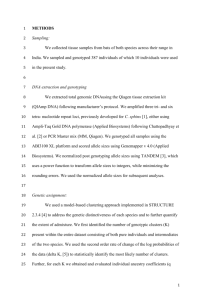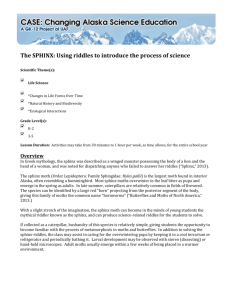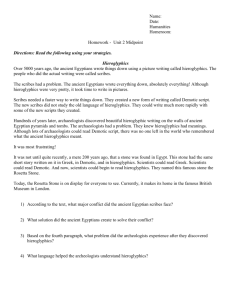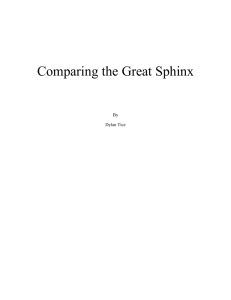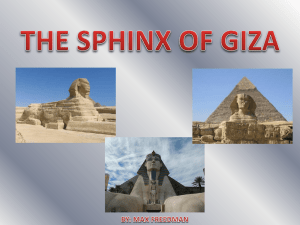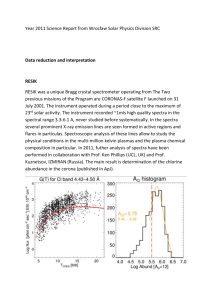View/Open
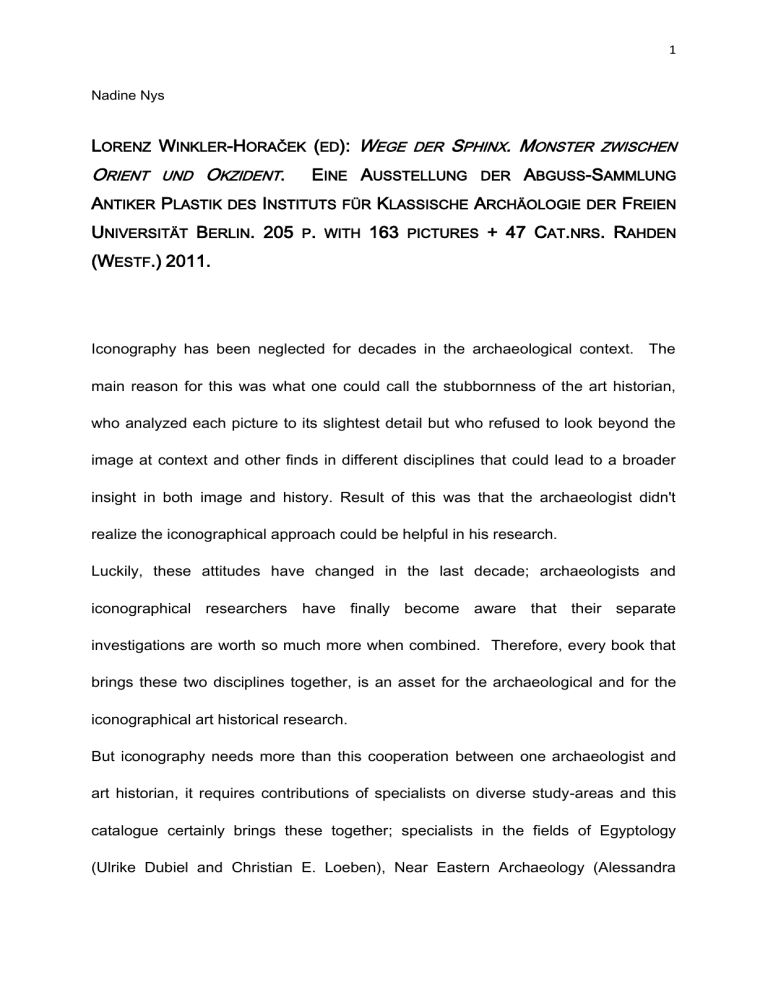
1
Nadine Nys
L
ORENZ
W
INKLER
-H
ORAČEK
(
ED
): W EGE DER S PHINX .
M ONSTER ZWISCHEN
O RIENT UND O KZIDENT .
E
INE
A
USSTELLUNG DER
A
BGUSS
-S
AMMLUNG
A NTIKER P LASTIK DES I NSTITUTS FÜR K LASSISCHE A RCHÄOLOGIE DER F REIEN
U
NIVERSITÄT
B
ERLIN
.
205
P
.
WITH
163
PICTURES
+ 47 C
AT
.
NRS
.
R
AHDEN
(W ESTF .) 2011.
Iconography has been neglected for decades in the archaeological context. The main reason for this was what one could call the stubbornness of the art historian, who analyzed each picture to its slightest detail but who refused to look beyond the image at context and other finds in different disciplines that could lead to a broader insight in both image and history. Result of this was that the archaeologist didn't realize the iconographical approach could be helpful in his research.
Luckily, these attitudes have changed in the last decade; archaeologists and iconographical researchers have finally become aware that their separate investigations are worth so much more when combined. Therefore, every book that brings these two disciplines together, is an asset for the archaeological and for the iconographical art historical research.
But iconography needs more than this cooperation between one archaeologist and art historian, it requires contributions of specialists on diverse study-areas and this catalogue certainly brings these together; specialists in the fields of Egyptology
(Ulrike Dubiel and Christian E. Loeben), Near Eastern Archaeology (Alessandra
2
Gilibert and Nils C. Ritter), Ancient Near Eastern Studies (Andreas Gräff), Classical
Archaeology (Nele Schröder and Thoralf Schröder) and Religion Studies (Almut-
Barbara Renger) all make their contribution to this catalogue.
With the catalogue, created within the framework of the "Berlin Cluster of
Excellence", the authors hope to gain a clearer insight, not so much in meaning and function of the motif of the sphinx, but most of all in the development of the motif through different areas and periods. Key aspect is finding out if there can be seen similarities or dissimilarities in meanings, functions, contexts and ideas between regions and periods.
The catalogue consists of two parts: the first treats the sphinx respectively in ancient
Egypt (U. Dubiel: Pharao – Gott – Wächter: Sphingen im alten Ägypten) and in 2 nd
Mill. BC Anatolia (A. Gilibert: Die anatolische Sphinx), then goes through ideas about and concepts of composite creatures in the Near East (A. Gräff & N.C. Ritter:
Mischwesen in Babylonien und Assyrien and N.C. Ritter: Die andere Sphinx –
Torwächter und Schutzwesen) and ends with the different meanings of these creatures in Northern Syria (A. Gilibert: Die nordsyrische Sphinx).
All these authors have done a great job overviewing, describing and explaining the sphinx in its context, both political and religious. Alessandra Gilibert e.g. talks about the relation between the Anatolian and the Egyptian sphinx and points to the profound difference in function of the male (companion of gods) and female sphinxes
3
(gate-guard) in the Hittite Period ( Die anatolische Sphinx). In her second contribution
( Die nordsyrische Sphinx) she points out how the sphinx came to be seen as an animal of death (through its connection with the Weather-god and his role in honoring the ancestors) and how this association got lost in the 8 th C. BC when the sphinx became the protector of fertility.
The second part deals with the assimilation of the composite creatures in Greece (L.
Winkler-Horaček: Fremde Welten oder die Wildnis im Angesicht der Zivilisation:
Sphingen und Tiere im archaischen Griechenland, Th. Schröder: Kontexte und
Bedeutungsfelder rundplastischer Löwen und Sphingen im frühen Griechenland, L.
Winkler-Horaček: Vom Bild zum Mythos, vom Mythos zum Bild: Der 'geflügelte
Menschenlöwe' und die Sphinx von Theben, and A.-B. Renger: Ödipus vor der
Sphinx im 5. Jahrhundert v. Chr. Einführende Bemerkungen zu einer mythischen
Konstellation in Text und Bild) and ends with an overview of the sphinx in Etruria and
Rome (N. Schröder: Ausblick: Die Sphinx in etruskischer und römischer Zeit).
In the articles Fremde Welten oder die Wildnis … and Vom Bild zum Mythos…
Winkler-Horaček sets out to show how the sphinx was part of wild nature and states the question if this was reason enough for her to be called demon of death or if it was only her savage nature that made her dangerous for gods and people alike. It was this trait of character that enabled her to function as a guard at entrances and graves.
The sixth article in the catalogue, a contribution of editor Lorenz Winkler-Horaček
( Wege der Sphinx: Von Ägypten und Vorderasien nach Griechenland) joins the two parts together; it shows how meaning and ideas connected to the sphinx in Egypt
4 and the Near East influenced the motif and its meaning in Minoan, Mycenaean and
Archaic Greece.
Winkler-Horaček sketches the appearance of the winged sphinx in the representational world of Minoan and later Mycenaean Greece through the influence of Syrian on Egyptian iconography. He also traces briefly the resemblances of certain attributes of the sphinx (vegetative headdress and hair spiral) through
Anatolian, Egyptian and Near-Eastern imagery.
While the catalogue has a good and clear structure, I feel there are some shortcomings. E.g. the statement by Dubiel ( Pharao – Gott – Wächter: Sphingen im
Alten Ägypten) that sphinxes are an Egyptian invention is rather dubious (p. 5). At the moment it is considered impossible to determine where the sphinx showed up first: in Egypt or in Mesopotamia (see e.g. Seidlmayer, Stephan (2001) 'Sphinx'. In
Der Neue Pauly. Enzyklopädie der Antike. H. Cancik, Helmuth Schneider, ed. Vol.
11. Stuttgart/Weimar: Verlag J.B. Metzler. p. 817).
A second remark concerns the interaction between the different authors, or rather, the lack of interaction. It is a pity that both Gilibert ( Die anatolische Sphinx and Die nordsyrischen Sphinx) and Ritter (Die andere Sphinx – Torwächter und
Schutszwesen in Assyrien) have written about the sphinx functioning as a gate-guard or about the destruction of sphinxes to take away their powers without ever referring to each other. The same holds for Winkler-Horaček when he states that the frightful character of the sphinx enabled her to function as guard or when he sees the sphinx
5 in relation to death ( Vom Bild zum Mythos, vom Mythos zum Bild: Der geflügelte
Menschenlöwe und die Sphinx von Theben).
Although this catalogue is a great initiative in the field of iconography, it certainly is not the concluding work that makes all future work on the iconography of sphinxes futile. The main objection I have is that, while each individual author gives an extensive and mostly thorough studied overview of the image of the composite creatures and/or the sphinx in his or her region, a concluding chapter that brings all the findings, results and hypotheses of the different contributions together is lacking.
It seems as if the general overview is forgotten and therefore, I feel, the catalogue doesn't completely fulfill its purpose: to give insight in how types, forms, and attributes of sphinxes together with meanings, concepts and ideas traveled from one region to another, got assimilated or adapted into the region's own world of images and ideas (exception to this is Greece). The reader can put together all the findings and conclusions himself, and then he will see that the sphinx has gone through a dynamic process on its way through different cultures and that the motif seems to have a common essential feature, although there exists a great diversity of meanings, that change according to region and period. The catalogue looks at parts of the dynamic process of influences and receptions, of refusals and new ideas. But the answers to the main research questions stated in the introduction are not clearly laid out and no (or too few) conclusions are drawn. The catalogue, however, certainly is a major contribution to the extensive research of the motif of the sphinx, but there is a lot of work left to fully unveil the secrets of the sphinx.
6
